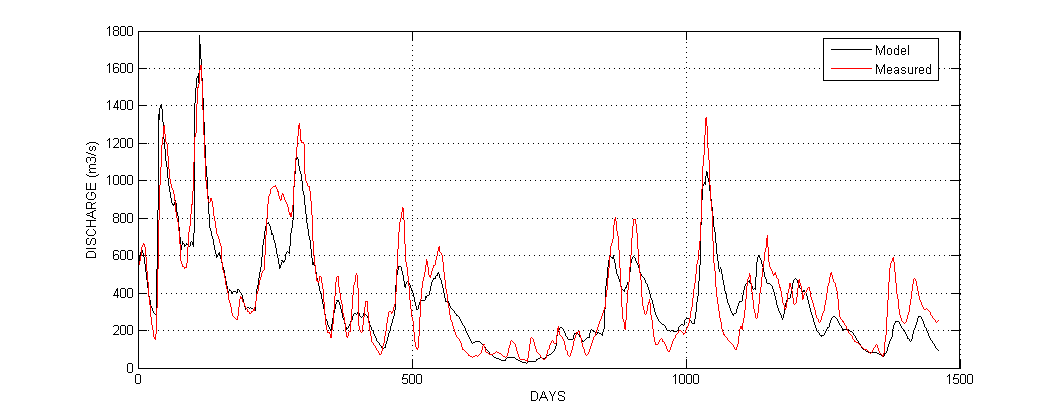
Conceptual Model for River Discharges in Large Basins with Significant Flood-propagation Effects. Application to the Tebicuary Basin in Paraguay
2Secretaría del Ambiente, Dirección General de Protección y Conservación de Recursos Hídricos
For most applications, it is convenient to separate hydrological and hydraulic processes, applying distinct methods to solve them independently, often in a sequential way. Modelling river discharges can be generally accomplished by selecting and calibrating a single hydrological model, which usually includes a routing sub-model that caters for a simple and quick hydraulic fix (i.e. a constant lag or a wedge-shaped storage). However, in large basins with gentle slopes, as is the case of many regions of the Amazon, Orinoco and Paraguay-Paraná Basins in South America, flood propagation is a complex and relevant phenomenon, and standard hydrological models fail to reproduce the slowly-modulated patterns of flow evolution, especially in the middle and lower reaches of large basins (>10000 km2). This forces the modeller into having to couple hydrological and hydraulic models, creating more complexity and bringing into play information which is often not available. In environments that are rich in data and resources that is hardly a matter of concern, but there are many instances when a simpler and more parsimonious approach is desirable.
This paper presents a model based on the combination of two simple conceptual sub-models, one for hydrology and one for hydraulics, which is capable of representing the discharges of large river basins with significant wave propagation effects in a lumped and efficient way, using a limited number of parameters (6). The model rests on the assumption that a large river basin can be represented as a rectangular region with a certain width-to-length ratio; the main river flows along the length of the rectangle and all the tributaries amount to a lateral uniform flow. The lateral inflows are represented by any lumped hydrological model, while the flow evolution along the main river is given by the analytical solution to the Hayami equation with a uniform lateral inflows, as obtained by Moussa (1996). The new model, in particular the combination of the Logistic Equilibrium Model (LEM) with the Hayami equation, has been successfully applied in the Tebicuary River at Villa Florida (Paraguay) with 20400 km2, relying only on mean daily precipitations and potential evapotranspiration as input data. The proposed model is computationally efficient, easy to calibrate and open-source (Matlab version).


Powered by Eventact EMS